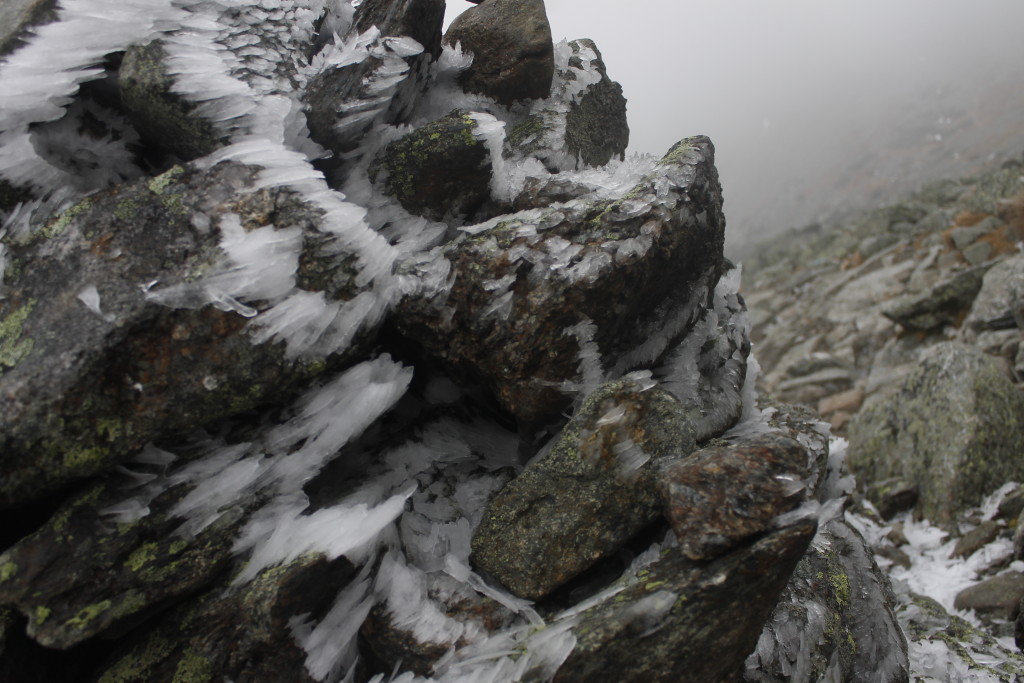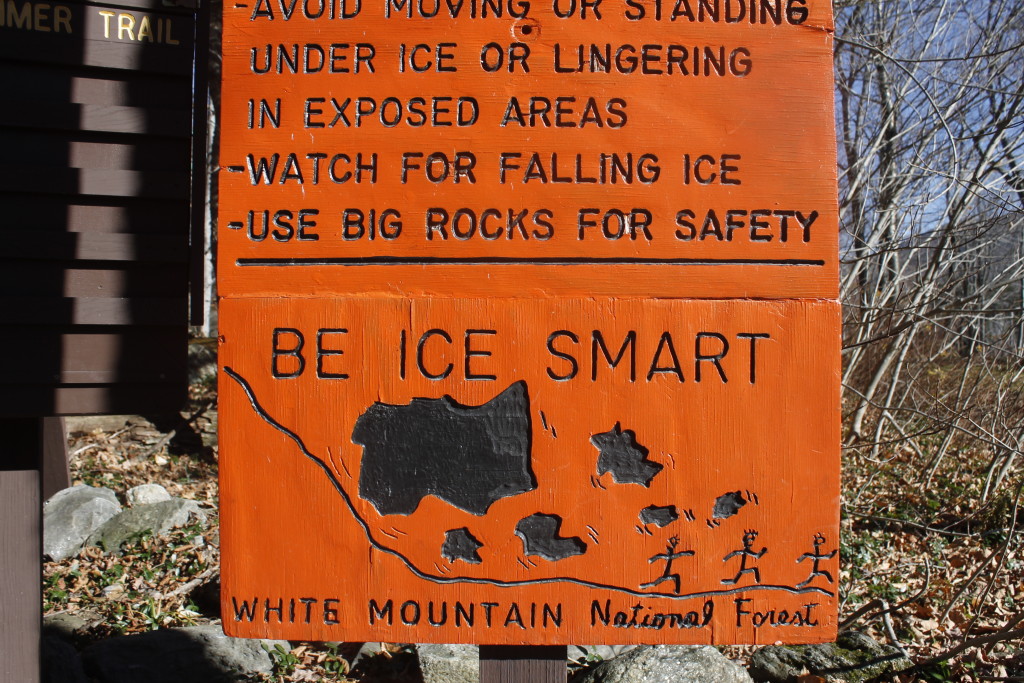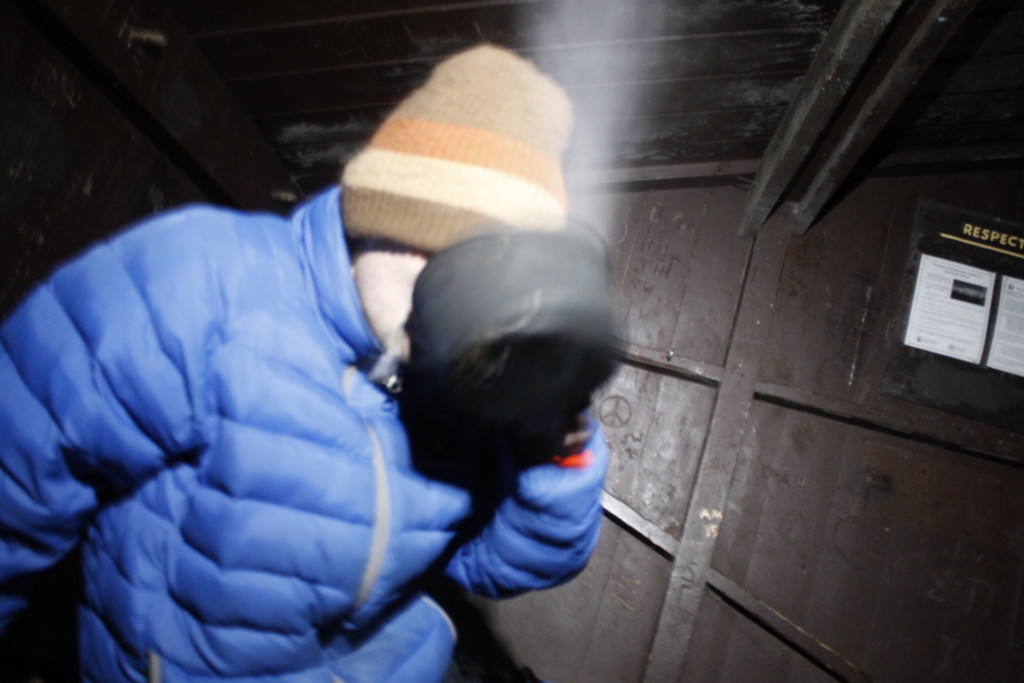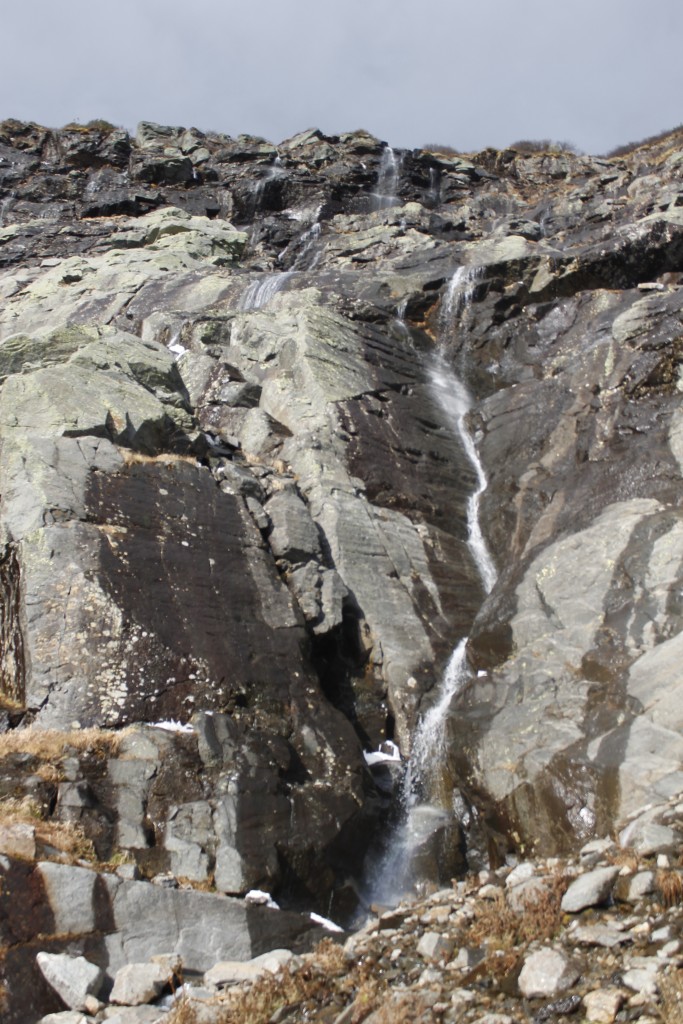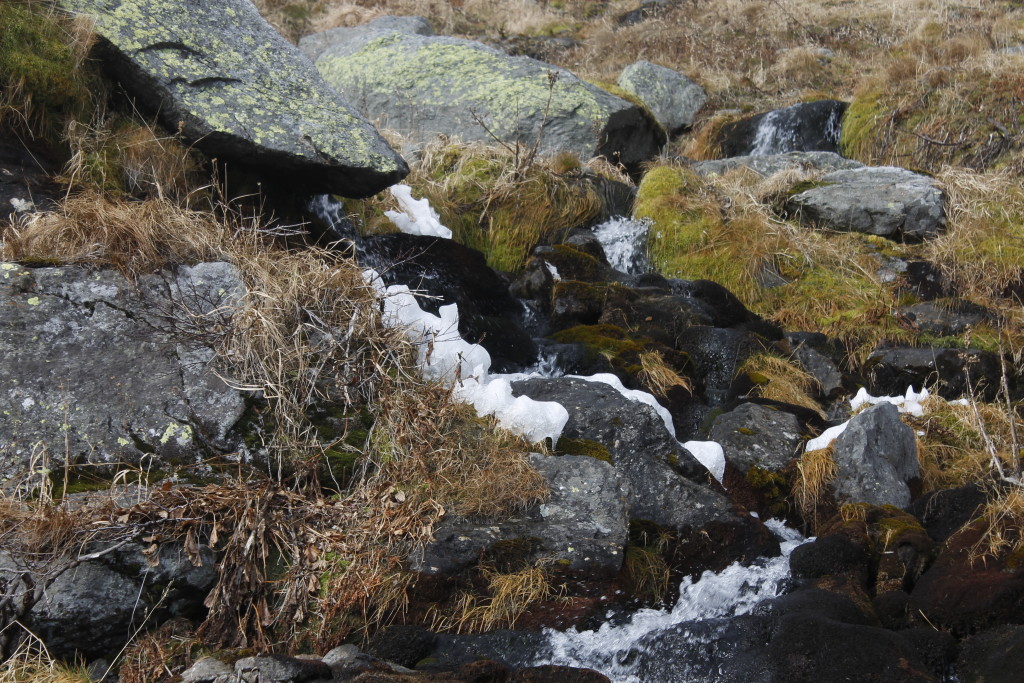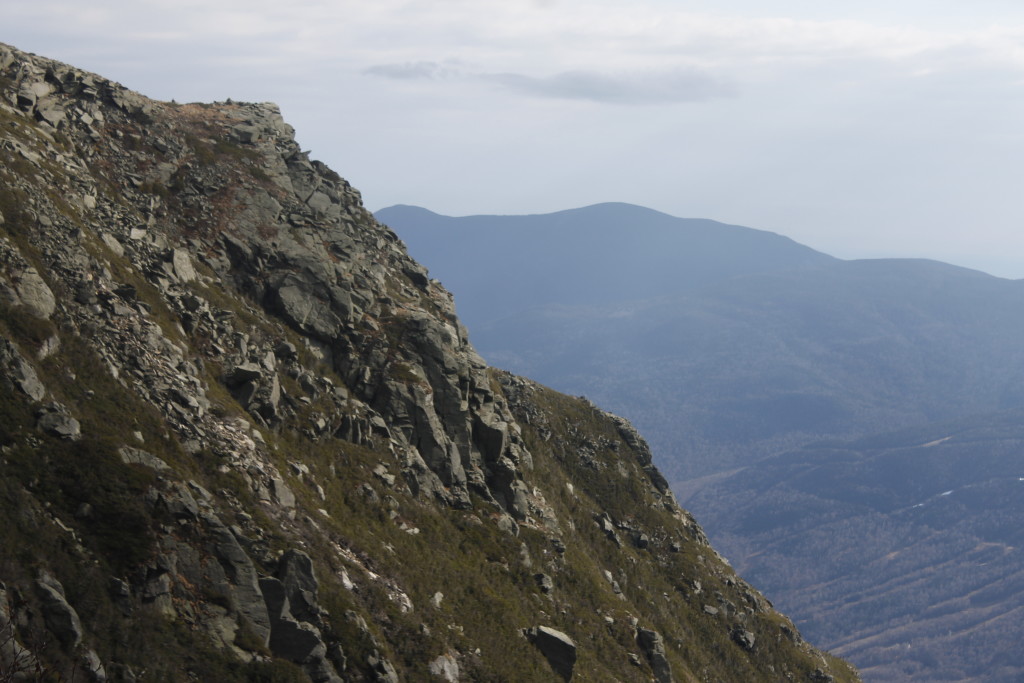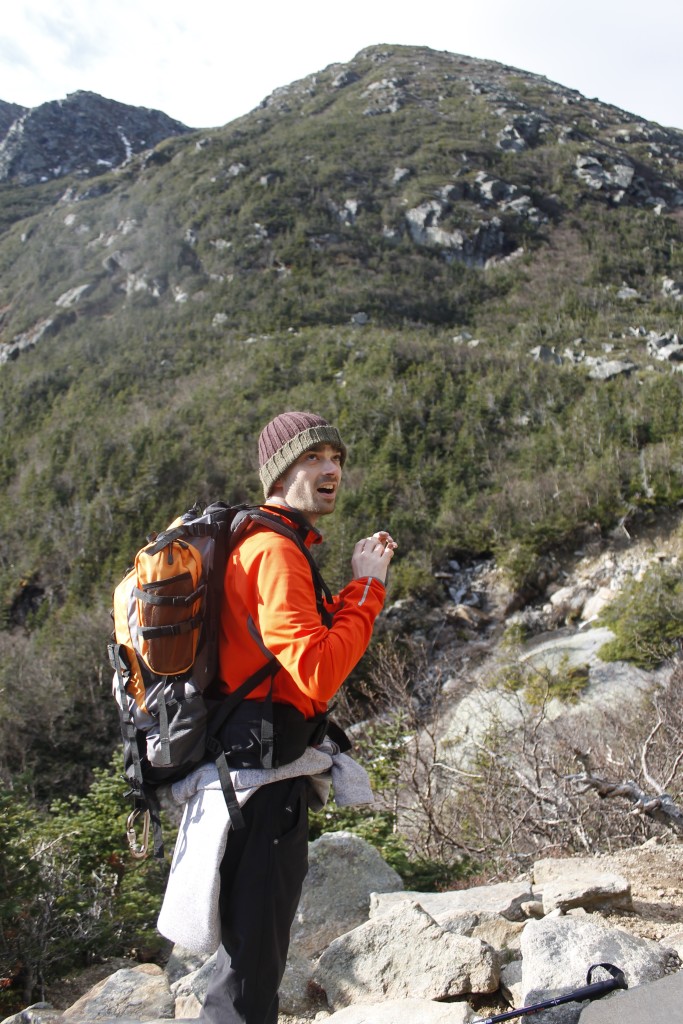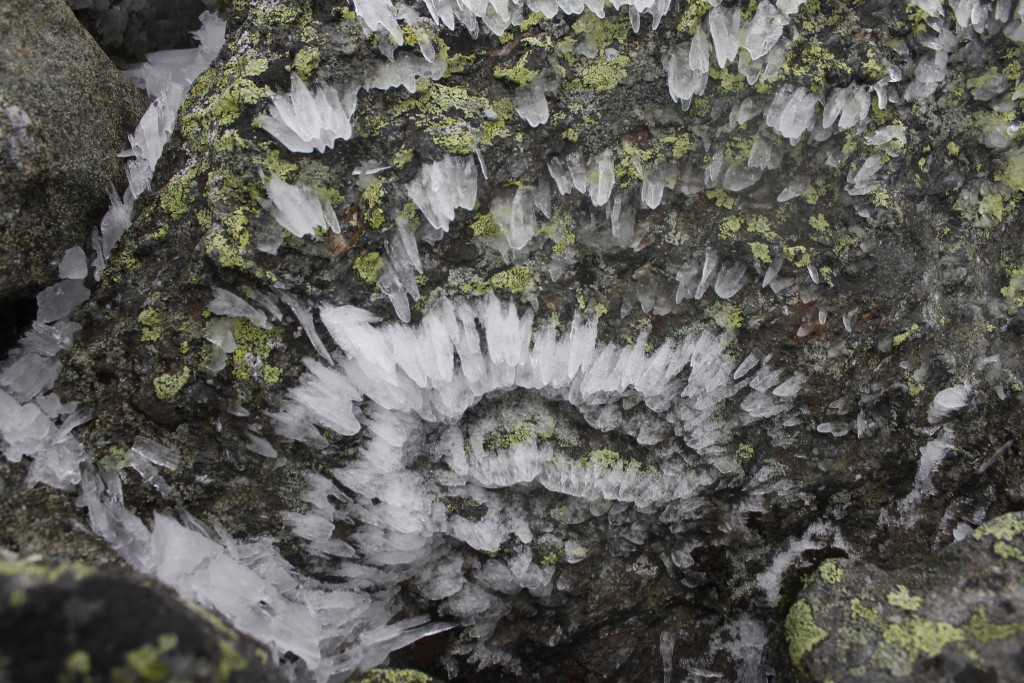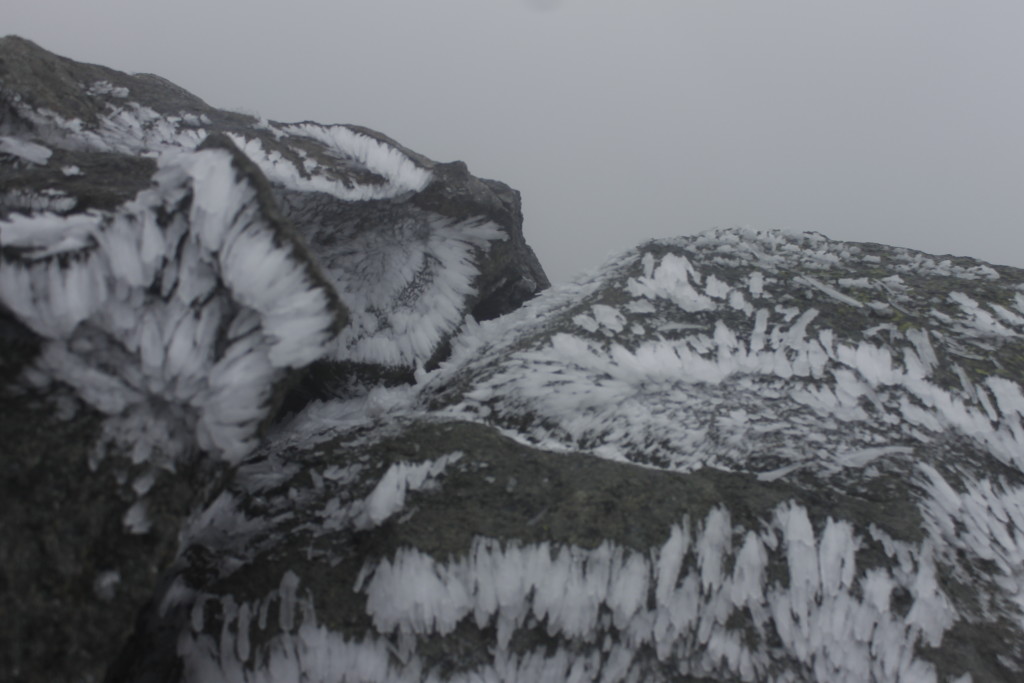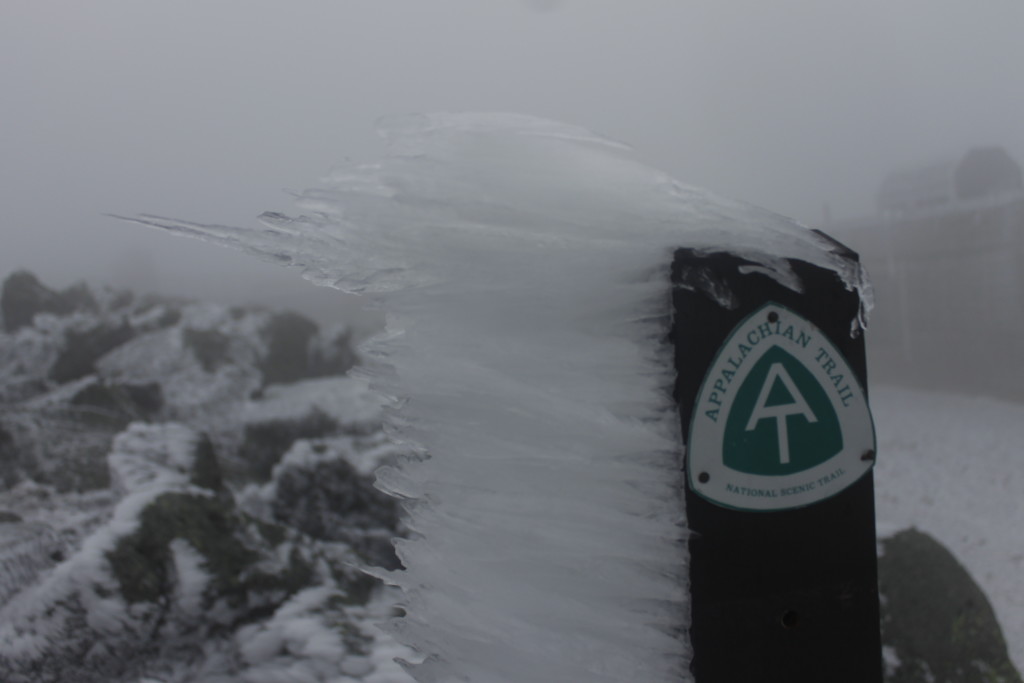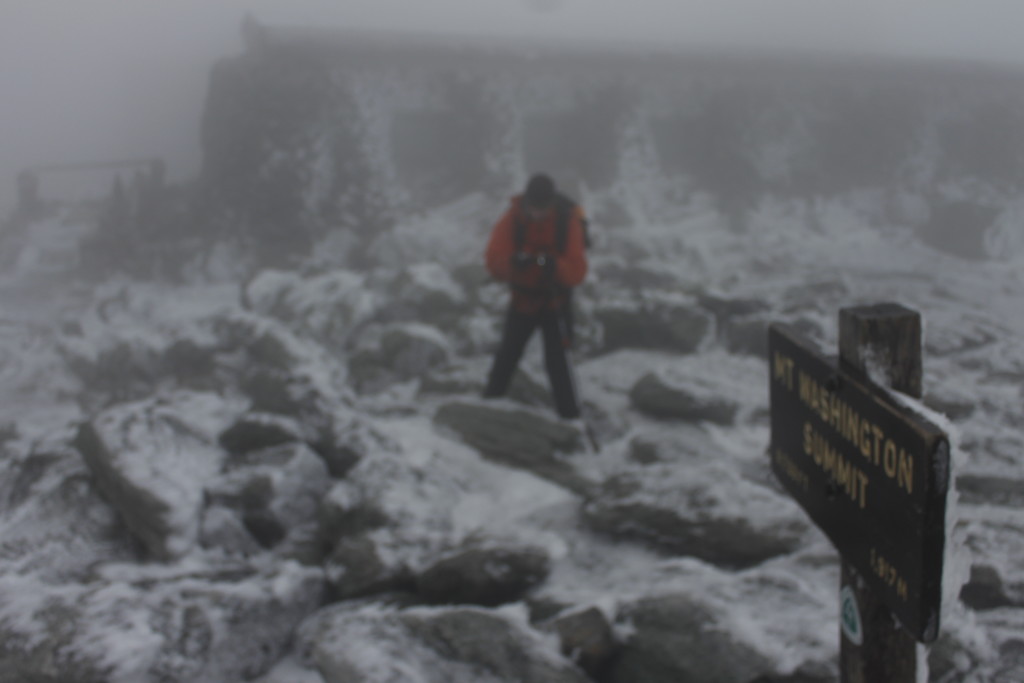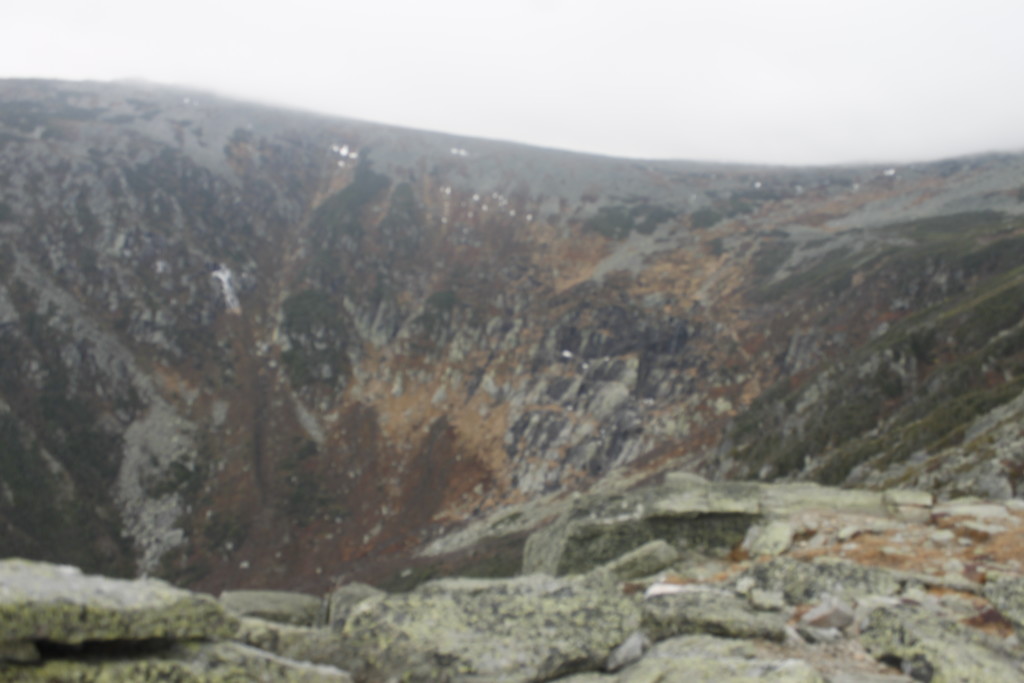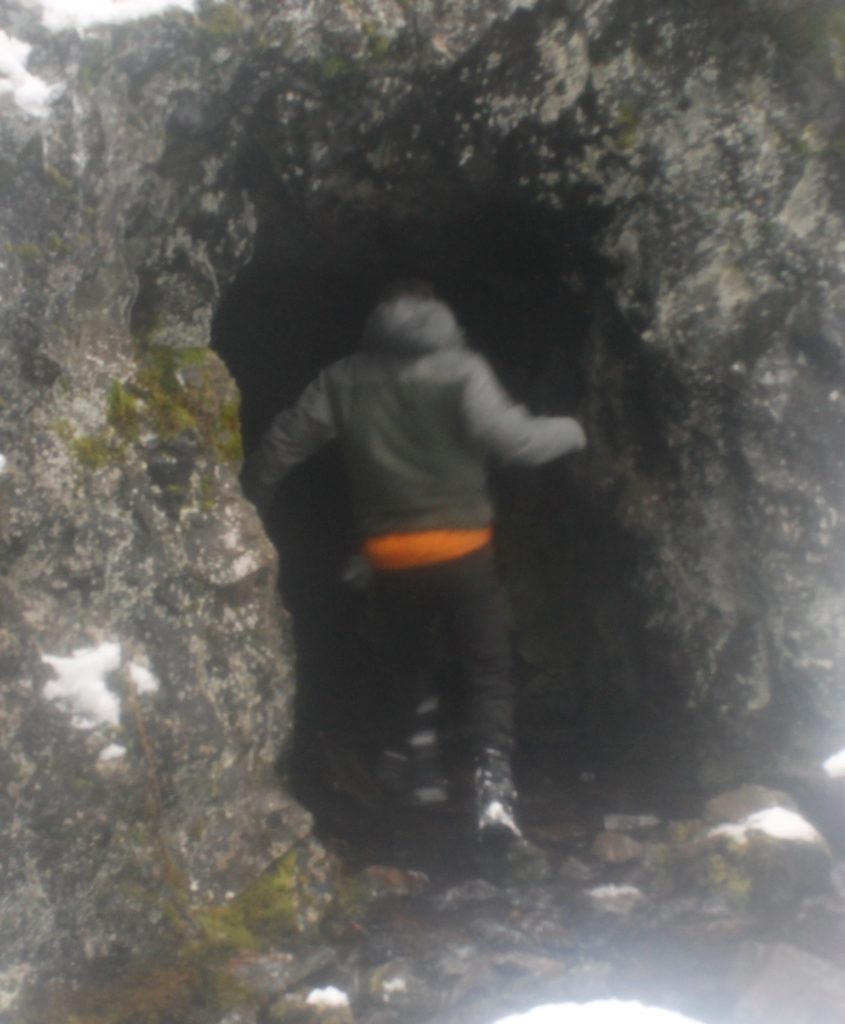
The snowfall was one thing Lauren and I hadn’t counted on when we set out in search of the Tubal Cain mine in the Dungeness Valley.
First there was the drive up from Sequim, where we climbed a couple thousand feet into the Olympic Mountains via a winding dirt road that was full of potholes. We got to the trailhead a bit before noon. The snow was beginning to pack onto the dirt. Soon enough, it would become impassable.
There was only a light dusting on the trail as we began our hike, but as we gained elevation, the snow deepened. High white peaks glared down on us.
A couple hours into our hike, the trail we’d been following through the trees became a slog through deeper powder. Following the twists and turns of the trail became more difficult. There appeared to be a fork next to some orange flagging. Lauren thought we should go left, but I insisted that we go straight ahead. My way petered out into a meadow a couple minutes later. The snow made it difficult to see where anything went.
We doubled back and tried Lauren’s route, which led into a boulder garden. We passed a few pieces of metal, which seemed out of place. A B-17 had crashed here on a rescue mission back in the ’50s, and apparently the debris had scattered over a large area (though we were probably looking at old mining equipment.) The main crash site was close by, and was a popular spot for visitors to check out, but it seemed unlikely that we would have time to check it out now that it was getting late.
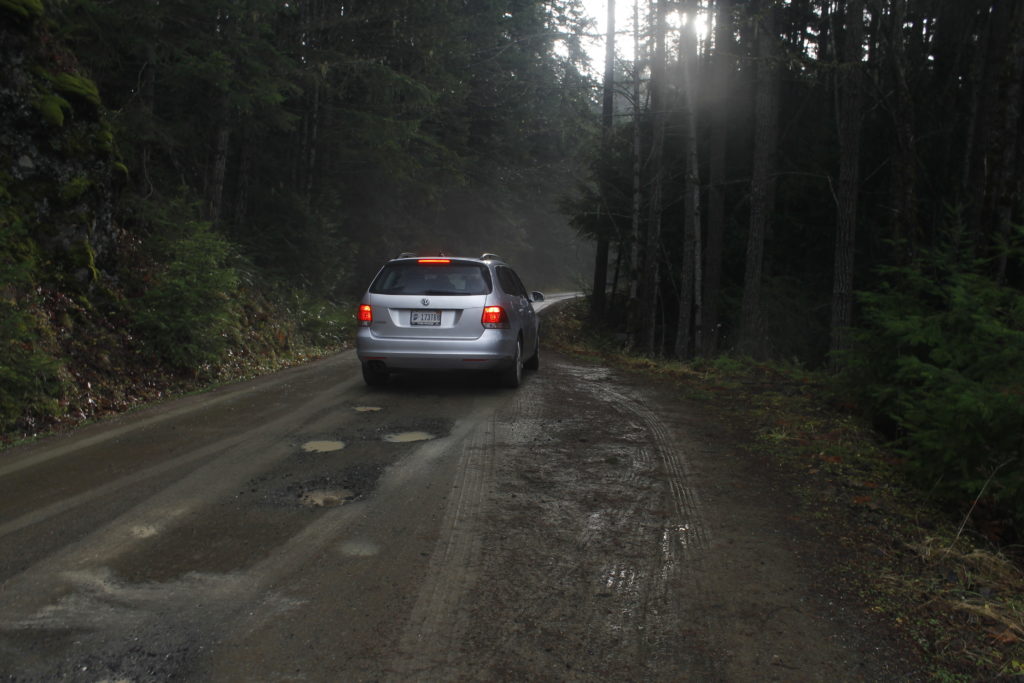
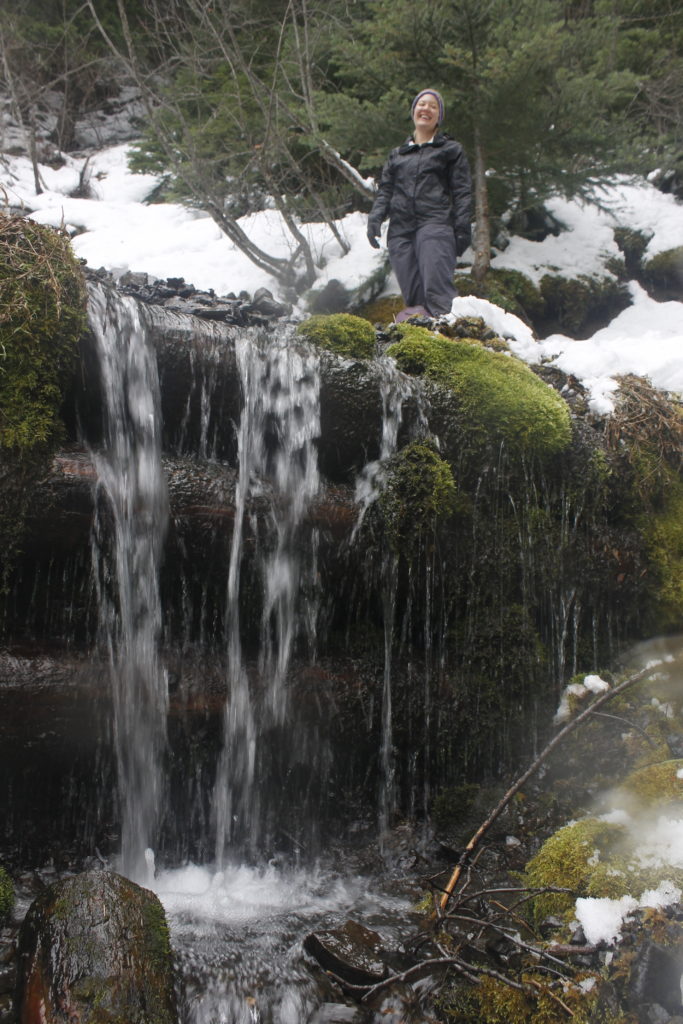 Lauren at a stream crossing along the trail
Lauren at a stream crossing along the trail
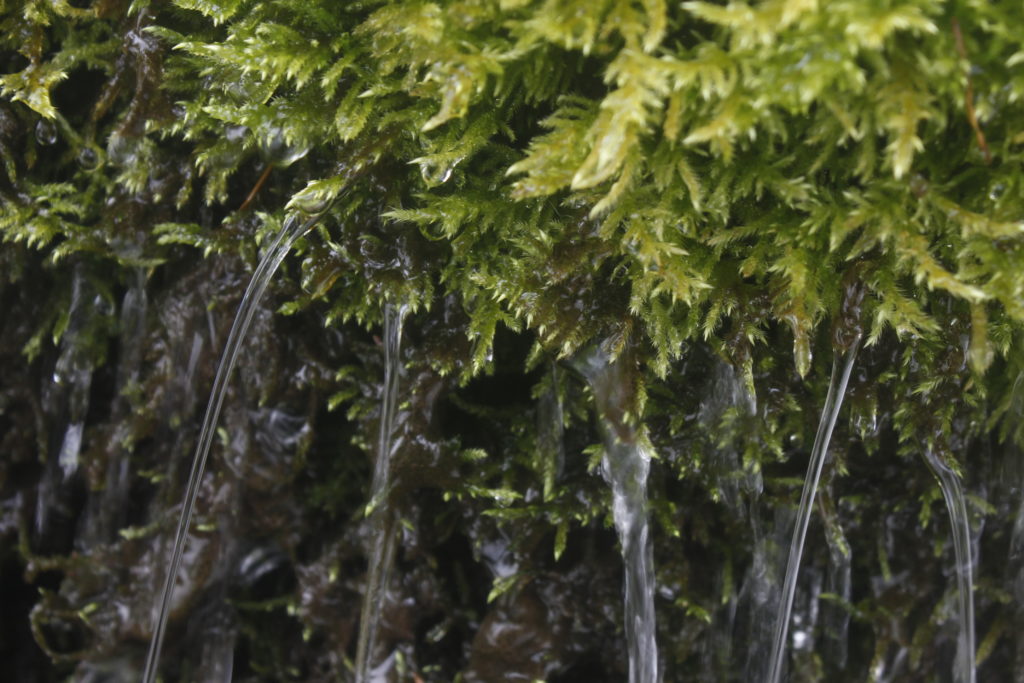 Moss closeup
Moss closeup
We had both put off lunch for a while, and were hungry. A large, overhanging boulder made for a semi-sheltered rest stop, where we could sit down.
The rocks had a weird smell to them like a mix between stale beer and marijuana. For a second, I wondered if someone else was out there with us, but we had seen no other tracks in the snow.
We sat down on my sleeping pad, eating fistfuls of Lauren’s homemade trail mix. I looked dubiously at a bruised up banana I had brought along. Fortunately, Lauren had the idea to incorporate it into a sandwich with flatbread and pieces of a chocolate bar. As if this weren’t fancy enough, she added a bit of the flambé. Using my lighter in lieu of a torch, she put the chocolate to the flame, melted it over the banana in a fine drizzle. This method took no small amount of time, but the melted chocolate pattern elevated the utilitarian wrap into backcountry gourmet.
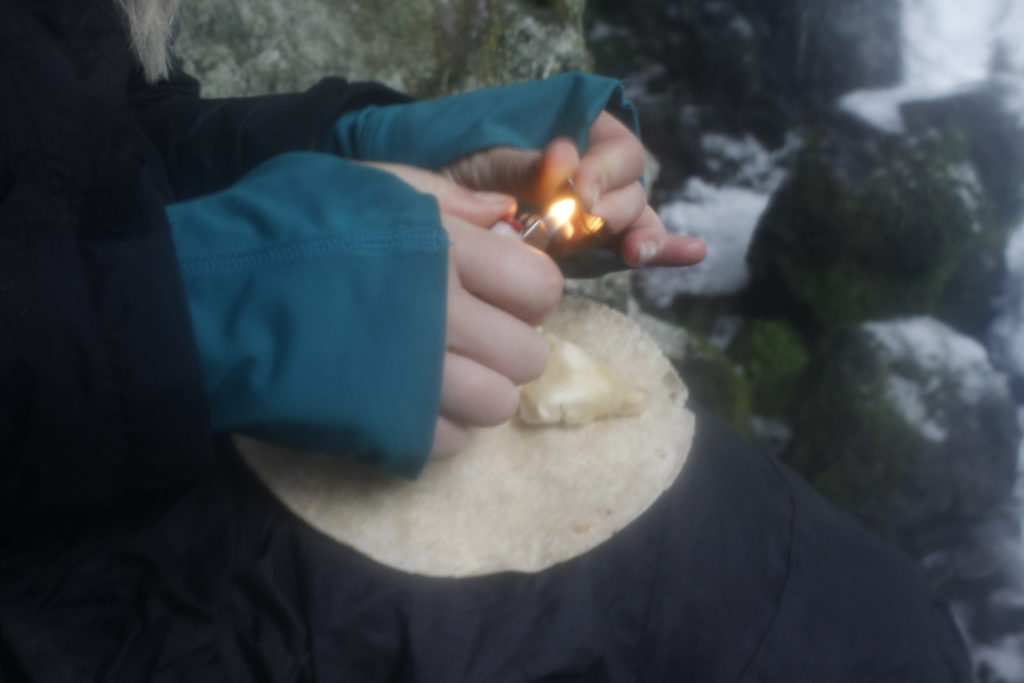
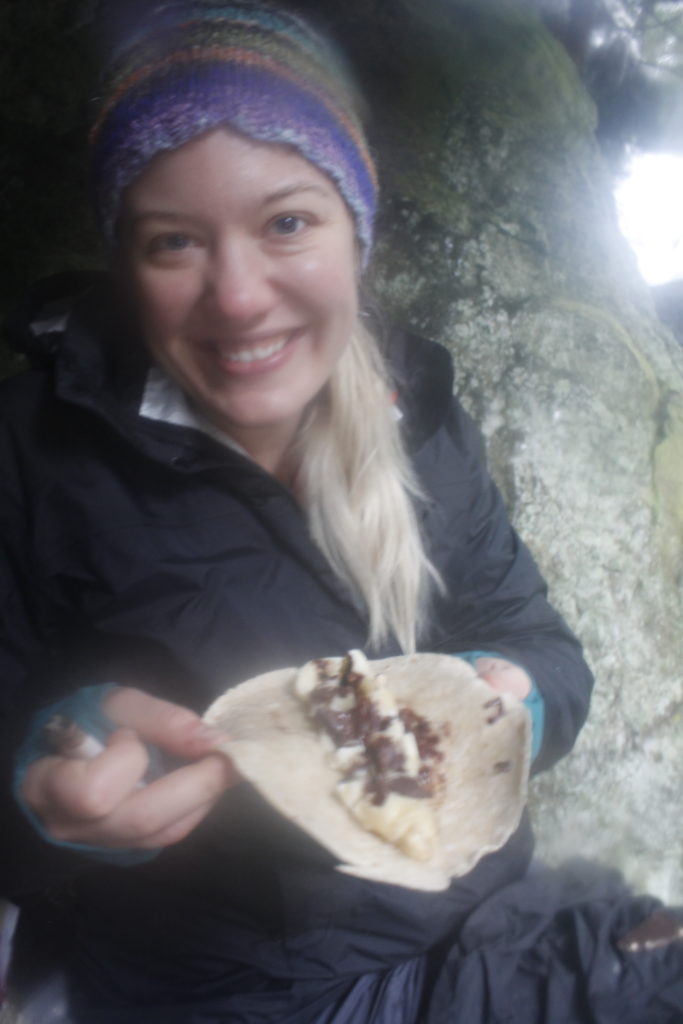
Unfortunately, the clock was running down on us.
If we didn’t head back soon, we would likely finish our hike in the dark. I decided that we owed ourselves another 10 minutes of searching for the mine before we called it a day.
I pulled the map out and squinted at the features to see where the trail was supposed to go.
It looked like the mine could be on the other side of a creek, so we crossed over. I took us up a snowy hillside, approaching a cliff wall. Something about this felt right, but I couldn’t tell if I was drawing conclusions based on false optimism. I beat my way ahead of Lauren through the drifted snow on the way uphill. There was a patch of gravel that looked trail-like. Once again, there was that strange skunky odor in the air. A few steps beyond and I was at the bottom of the cliff.
And there was the mine! It was a dark opening, a mouth in the gray body of the rock.
Row on row of icicles hung above the darkness like an array of fangs.
The beast had announced itself with stale breath — the dead odor that I had perceived earlier.
A drool of a stream gurgled out from the unseen depths.
Come on in.
I let myself savor my trepidation and turned back down the slope.
“Whoo Lauren! Come on up! You gotta see this!”
Several icicles fell off the rocks and smashed into the stream below. Plenty more of them were waiting up there — a definite hazard.
I also wanted to go in. But how far did the rabbit hole go?
I took a headlamp and a small lantern out from my pack. Well, we’d come this far.
Lauren was game to accompany me on some minor-league spelunking. I walked in first, with ginger steps upon the various stones and pieces of smashed up wood poking up above the water. There were segments of dilapidated tracks that would have transported cars full of ore back in the day.
Here in there were half-rusted pipes put in there God-knows-when; I only trusted half of them not to shatter beneath my feet. I shone the light in front of me, saw only a uniform corridor, retreating to oblivion. There was no undulation or other variation as in what one would expect from an ordinary cave. Neither were there stalactites or stalagmites. It was just tall enough to walk under, just wide enough to stretch hands out to reach either side.
A century ago, efficient men had chipped the tunnel straight and direct into the rock so it would bring them to the copper ore. The mine was named after Tubal Cain, a metalsmith and the biblical descendant of Cain — Abel’s jealous brother. For all the work that the men had put in, the mine had brought more hardship than profit. The clearest legacy of the men’s labors was the straight and narrow shaft bored into the rock.
There was one variation against the uniformity of the stone however. It was on the ceiling, where I perceived small hanging objects, here and there. Small, furry, hanging objects.
I turned carefully around to Lauren, noticed one of them near her head.
“Sooooo…” I said in a voice that was meant to sound calm, and which likely inspired the opposite, “How do you feel about bats?”
“I actually really don’t like them,” Lauren said.
“OK, so maybe we should walk back out the way we came.”
“You’re seeing bats in here?”
“Just don’t look up at the ceiling.”.
I waited until we made our retreat back to the light to announce that indeed there had been several chiropterans in the mine, one of which had been only a couple feet away from Lauren’s head.
Lauren noted that bats or birds, or anything flying at her head were really not her cup of tea.
They weren’t my cup of tea either. I recalled Stephen King’s book Cujo, where a bat bite turned a once lovable dog into a homicidal killer.
But that was just a story. What business did stories have to do with being afraid of the dark and its mutants and zombies and Gollum and old Tubal Cain himself, waiting for victims dumb enough to enter his lair?
What business?
I turned back to the mouth.
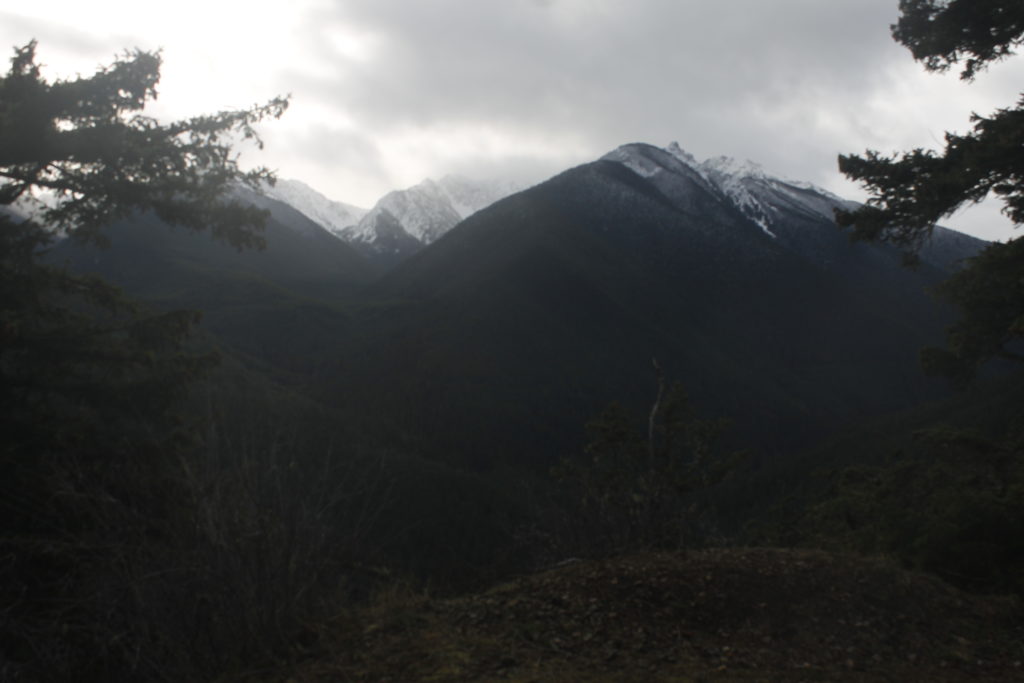
“I’ll be back in a little bit. I just want to see some more,” I said. You can tell them my story if I don’t come back.
Going back into the cave, I hunched over like Quasimodo, in hopes that any bats I dislodged would miss my face.* The stale air in the shaft made me uneasy. No photosynthesis putting out fresh oxygen here. Our nostrils can tell us much about our proximity to life.
I began to feel hot under my jacket as I walked into the earth. I picked my way above the stream, moving from stone to wood, to any section of pipe I trusted enough to put my weight on. I took one misstep and managed to put half my boot in the water.
“Damn!”
“Are you alright?” Lauren called from the open world far away.
“Yeah, I’m OK.”
I kept trudging forward. I wondered if there would be any side alcoves or tunnels and if I would have the nerve to explore them. A big open chamber would be pretty cool. All I found was the same endless tunnel. Finally, after I spent many minutes of walking straight, the ceiling dropped lower and the walls closed in. The corridor went further toward some unseeable destination.
While the passage was still wide enough to move through on my feet, do to so, I’d have to walk through the stream, which ran deeper in the narrows. With a couple of hours of snowy hiking ahead of me, I was in no mood to turn my feet into ice blocks.
I hated to admit it, but I was relieved not to have an excuse to turn around. If not for the obstruction, how much farther would I have gone?** I guessed that I had gone about 100 yards through the narrow corridor, or about the length of a football field. I was ready to go back.
Hardier explorers than I will have to plumb the mysteries of Tubal Cain.
I picked my way back over the stream to the entrance of the mine. Every step made the walls a little brighter. I exhaled in relief and then took a breath of the fresh mountain air outside.
No bats had attacked, I had made it out alive and it was time for Lauren and I to hike back out through the snow to the car. I was glad get back to the land of the living.
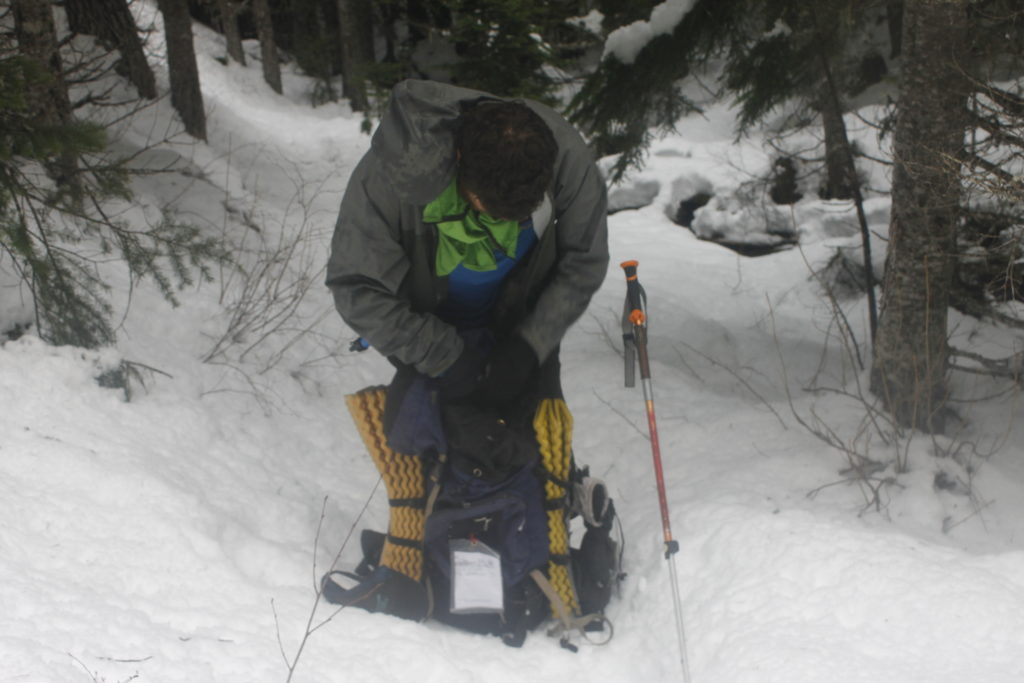 The author takes a moment to mess with his pack
The author takes a moment to mess with his pack
Notes
* After I returned from the hike, I talked to a friend who had been on a few cave tours. Even when bats fly out, they will avoid collisions with sonar, she said. The best thing to do if a bunch of bats come at you is to stay still and let them steer away. If you freak out and flap your arms, they are more likely to be confused and hit you.
** Apparently, the Tubal Cain mine goes almost 3,000 feet back into the rock. So I was probably only a tenth of the way in. I also learned later that the mine is still private property and I was not supposed to go in because of risk (unspecified.) I’ll plead innocent here, having not read this anywhere before the trip. I dug information about mine history here: http://www.kawal.net/tubalcain.htm.
I learned about the scale of the mine, its current ownership and the B-17 here: http://www.seattletimes.com/life/travel/an-eerie-october-hike-to-downed-b-17-and-old-mine-site/

